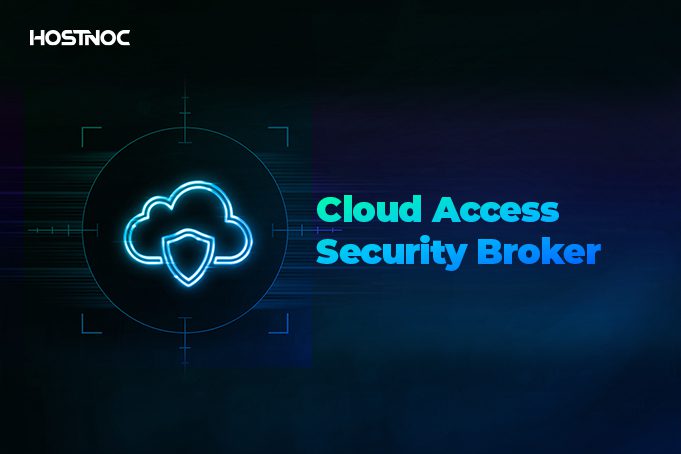Blogs

Top 10 Most Demanding IT Jobs In 2023
January 31, 2023
Cloud Access Security Broker: Everything You Need To Know
February 16, 2023Cloud Cost Management: The Ultimate Guide
According to cloud cost management statistics, small and medium size enterprises spent an estimated 47% of their technology budgets on cloud services in 2022. This translates into a 67% increase from 2021 to 2022. Moreover, it is predicted that cloud investments will almost make up more than 50% of their IT budget in 2023.
In another survey conducted by Pepperdata, 64% of respondents said that cost management and containment is the biggest concern when managing the cloud. Despite the advantages offered by cloud, the rising cloud costs are a daunting challenge for businesses.
If you are struggling to control the cloud costs and looking for ways to manage your cloud costs more efficiently then this article is for you. In this article, you will learn everything you need to know about cloud cost management.
Read more: Top 10 Cloud Security Challenges, According To SUSE Survey
According to cloud cost management statistics, small and medium size enterprises spent an estimated 47% of their technology budgets on cloud services in 2022. This translates into a 67% increase from 2021 to 2022. Moreover, it is predicted that cloud investments will almost make up more than 50% of their IT budget in 2023.
In another survey conducted by Pepperdata, 64% of respondents said that cost management and containment is the biggest concern when managing the cloud. Despite the advantages offered by cloud, the rising cloud costs are a daunting challenge for businesses.
If you are struggling to control the cloud costs and looking for ways to manage your cloud costs more efficiently then this article is for you. In this article, you will learn everything you need to know about cloud cost management.
Read more: Top 10 Cloud Security Challenges, According To SUSE Survey
- Cloud Cost Management: The Ultimate Guide
- What is Cloud Cost Management?
- What are The Advantages of Cloud Cost Management?
- Why Is Cloud Cost Management Important?
- What are the Best Cloud Cost Management Strategies?
- What are the Best Practices For Cloud Cost Management?
- Which are the Best Cloud Cost Management Tools?
- Conclusion
Cloud Cost Management: The Ultimate Guide
Here is everything you need to know about cloud cost management
What is Cloud Cost Management?
Cloud cost management is the process of monitoring, controlling, and optimizing the costs associated with using cloud services. With the increasing adoption of cloud computing, it has become essential for businesses to have a solid understanding of their cloud costs in order to prevent overspending and ensure that resources are being used efficiently.
What are The Advantages of Cloud Cost Management?
One of the main advantages of cloud cost management is the ability to control and predict costs. With cloud cost management tools, businesses can track and forecast costs associated with different services, such as storage, compute and networking. This allows them to make informed decisions about which services to use and how much to allocate for them.
Another advantage is the ability to optimize resources. Cloud cost management strategies such as right-sizing resources, using reserved instances, and using spot instances, can help businesses reduce costs associated with underutilized resources. Automation can also be used to scale resources up and down as needed, ensuring that resources are always available when they are needed.
Read more: Cloud Access Security Broker: Everything You Need To Know
Why Is Cloud Cost Management Important?
Cloud cost management is important because it helps businesses ensure that they are getting the most out of their cloud resources. Without proper cost management, businesses may end up overspending on cloud services or using more resources than they actually need. This can lead to unnecessary costs and inefficiencies.
What are the Best Cloud Cost Management Strategies?
In order to effectively manage cloud costs, businesses can use a variety of strategies. One of the most important is cost monitoring, which can be done through the use of cloud cost management tools. These tools can provide detailed information on costs associated with different services, as well as alerts and notifications when costs reach a certain threshold.
Another important strategy is cost optimization, which includes things such as right-sizing resources, using reserved instances, and using spot instances. These strategies can help businesses reduce costs associated with underutilized resources and ensure that resources are being used efficiently.
Automation is also a key strategy in cloud cost management, allowing businesses to scale resources up and down as needed. This can help reduce costs associated with underutilized resources and ensure that resources are always available when they are needed.
In addition to these strategies, businesses can also use cost allocation methods to ensure that costs are being allocated to the appropriate teams or projects. This can be done through the use of tags, which can be applied to resources to indicate which team or project they are associated with.
Read more: Fast Dedicated Server
What are the Best Practices For Cloud Cost Management?
Here are some of the cloud cost management best practices you can follow to keep your cloud bills under control.
- Optimize resources: Cost optimization strategies such as right-sizing resources, using reserved instances, and using spot instances can help businesses reduce costs associated with underutilized resources. Automation can also be used to scale resources up and down as needed, ensuring that resources are always available when they are needed.
- Use cost allocation methods: To ensure that costs are being allocated to the appropriate teams or projects, businesses can use cost allocation methods. This can be done through the use of tags, which can be applied to resources to indicate which team or project they are associated with.
- Have a cost governance process in place: A cost governance process can help to ensure that costs are being managed effectively and that the company is getting the most value out of its cloud resources. This process should include regular reviews of costs, tracking of usage and cost trends, and the development of policies and procedures to manage costs.
- Leverage reserved instances and spot instances: Reserved instances allow businesses to commit to using a certain amount of resources over a certain period of time, in exchange for a discounted rate. Spot instances are instances that are available at a lower cost than on-demand instances, but can be terminated by the cloud provider if their capacity is needed for other customers.
- Regularly review and analyze costs: Regularly reviewing and analyzing costs can help businesses identify areas where they can reduce costs. This can include identifying underutilized resources, identifying services that are no longer needed, and negotiating better pricing with cloud providers.
- Be aware of the costs associated with data transfer: Data transfer costs can add up quickly, especially for businesses that have a large amount of data to transfer. To reduce data transfer costs, businesses can use services such as Amazon S3 Transfer Acceleration or CloudFront to accelerate data transfer.
Which are the Best Cloud Cost Management Tools?
There are many cloud cost management tools available, but here are the top five that are widely used by businesses:
- AWS Cost Explorer: This tool from Amazon Web Services (AWS) allows businesses to view and analyze their AWS costs and usage. It provides detailed information on costs associated with different services, as well as the ability to create custom reports and alerts.
- Azure Cost Management: This tool from Microsoft Azure provides businesses with cost and usage insights for their Azure resources. It allows businesses to track and forecast costs, set budgets, and optimize resources.
- Google Cloud Cost Management: This tool from Google Cloud Platform (GCP) allows businesses to monitor and manage their GCP costs. It provides detailed information on costs associated with different services, as well as the ability to set budgets and alerts.
- Cloudability: This is a third-party cloud cost management tool that can be used with multiple cloud providers, including AWS, Azure, and GCP. It provides businesses with detailed cost and usage information, as well as the ability to create custom reports and alerts.
- Apptio Cloudability: This tool from Apptio provides businesses with a single platform for managing costs across multiple cloud providers, including AWS, Azure, and GCP. It offers detailed cost and usage information, automated cost optimization and forecasting, and the ability to create custom reports and alerts.
It’s worth noting that the best tool for your organization depends on the cloud provider you use, the size of your organization, and your specific needs.
Conclusion
Cloud cost management is an essential aspect of using cloud services. It can help businesses control and predict costs, optimize resources, and ensure that they are getting the most value out of their cloud resources. By implementing cost monitoring, cost optimization strategies, automation and cost allocation methods, businesses can effectively manage their cloud costs and make informed decisions about which services to use and how much to allocate for them.
Did this guide help you in understanding everything you need to know about cloud cost management? Share it with us in the comments section below.
Featured Post
Current State of Cloud Security: 7 Shocking Statistics That Will Blow Your Mind
Cloud always has a bad reputation when it comes to security and privacy. The advantages such as flexibility, scalability and lower costs tend to come to […]
How Cloud Computing Essentials Unlock Benefits for Businesses?
Table of Contents Understanding Cloud Computing Essentials Benefits of Cloud Computing Essentials 1. Cost Efficiency 2. Scalability and Flexibility 3. Improved Collaboration and Accessibility 4. Enhanced […]
Ultimate Guide To Cloud Native Application Protection Platform
Table of Contents Ultimate Guide To Cloud Native Application Protection Platform What are Cloud Native Applications? What is a Cloud Native Application Protection Platform (CNAPP)? What […]












